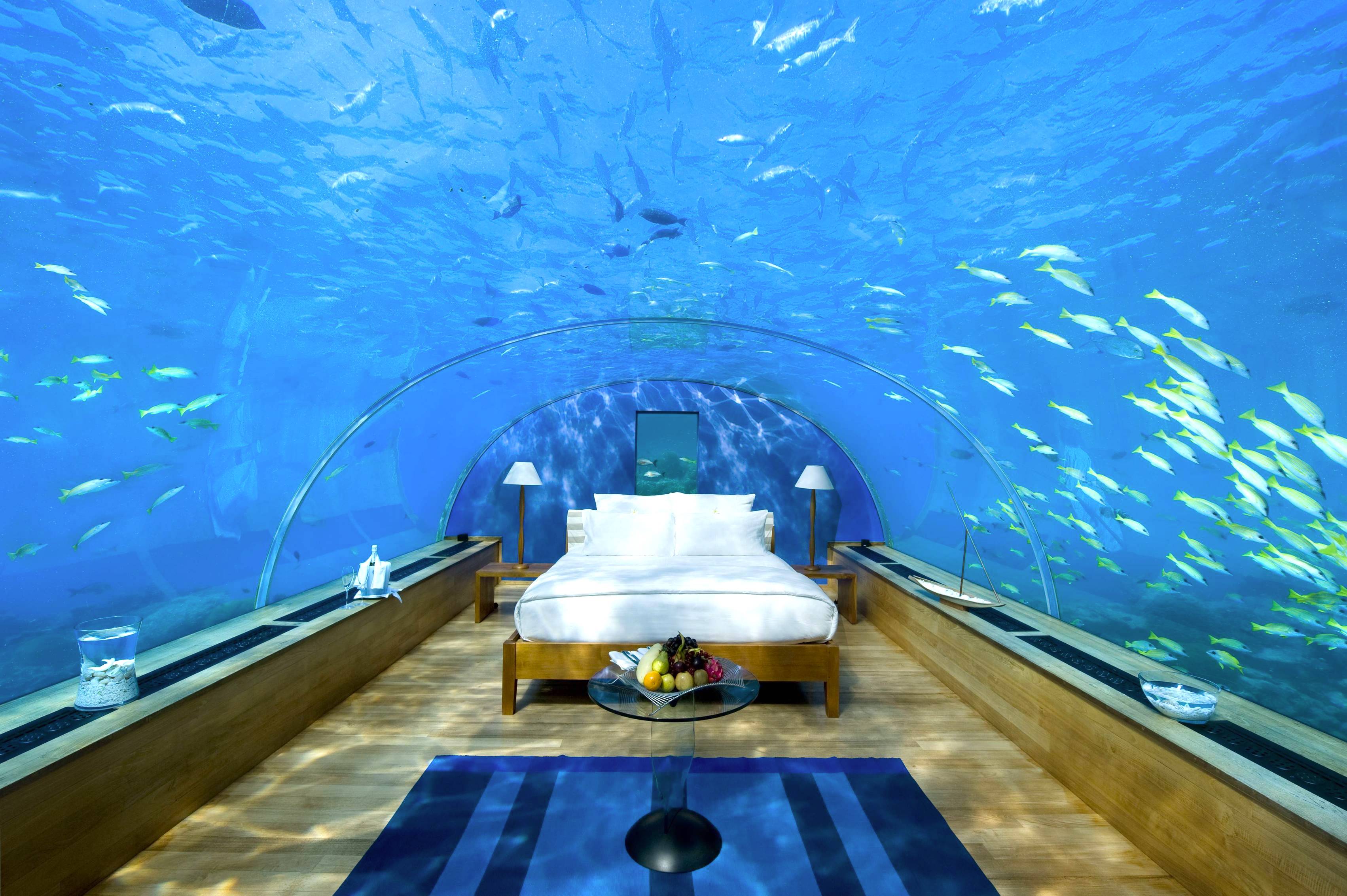Creating the Underwater Ambiance

Transforming your bedroom into an underwater oasis requires careful consideration of color, lighting, and texture to create a truly immersive experience. By embracing the hues of the ocean depths and incorporating elements that evoke marine life, you can transport yourself to a tranquil underwater world.
Color Palette
A calming and serene atmosphere is achieved through a thoughtful selection of colors. The ocean depths inspire a palette of blues, greens, and teals, each offering a unique depth and tranquility. Deep blues, like sapphire or navy, create a sense of mystery and depth, while lighter blues, such as sky blue or turquoise, add a touch of brightness and airiness. Greens, ranging from emerald to seafoam, introduce a sense of life and growth, reminiscent of seaweed and coral reefs. Teals, with their blend of blue and green, offer a harmonious balance, evoking the calming waters of a lagoon.
- Deep blues: Sapphire, navy
- Lighter blues: Sky blue, turquoise
- Greens: Emerald, seafoam
- Teals: Teal, aqua
To add pops of vibrancy and life to the color scheme, incorporate accents of coral, seaweed, and other marine life. Coral, in shades of pink, orange, and red, adds a touch of warmth and excitement. Seaweed, in shades of green and brown, adds a sense of texture and movement. Other marine life, such as starfish, seashells, and jellyfish, can be incorporated through artwork, textiles, or decorative elements.
Underwater-Themed Lighting
Lighting plays a crucial role in creating the illusion of being underwater. Mood lighting, with its soft, diffused glow, can evoke the sense of being enveloped by the ocean’s embrace. LED strips, strategically placed behind furniture or along the walls, can mimic the shimmering effect of sunlight filtering through the water. Projected images of underwater scenes, such as coral reefs or schools of fish, can further enhance the immersive experience.
Texture
Texture adds depth and realism to the underwater theme. Materials like wood, stone, and fabric can be used to mimic the ocean floor or coral reefs. Wood, with its natural grains and textures, can be used for furniture, flooring, or wall accents, evoking the feeling of driftwood or coral. Stone, in shades of gray, brown, or white, can be used for accents, such as a stone fireplace or a stone-clad wall, to resemble rocks or coral formations. Fabric, in textures like velvet, linen, or silk, can be used for bedding, curtains, or throw pillows, adding a touch of softness and movement, reminiscent of seaweed or jellyfish.
Bringing the Ocean Inside: Underwater Themed Bedroom Ideas

Bringing the ocean into your bedroom isn’t just about aesthetics; it’s about creating a sanctuary that evokes the calming and rejuvenating vibes of the sea. By incorporating real elements of the ocean, you can transform your space into a true underwater oasis.
Incorporating Real Ocean Elements, Underwater themed bedroom ideas
To achieve that authentic underwater ambiance, you can add real elements of the ocean to your bedroom. These elements can range from small, subtle touches to larger statement pieces, depending on your preference and the overall design of your space. Here are some tips for incorporating real ocean elements:
- Include a small aquarium with colorful fish.
- Display a collection of seashells and starfish.
- Hang a driftwood sculpture on the wall.
- Incorporate a water feature, such as a small fountain or a bubbling rock.
Displaying Seashells
Seashells are a classic element of an underwater theme. You can display them in a variety of ways to add a touch of whimsy and natural beauty to your bedroom. Here are some creative ways to display seashells:
A unique and creative way to display a collection of seashells is to create a seashell mobile. You can use different sizes and shapes of shells, and suspend them from a piece of driftwood or a metal ring.
Using Natural Materials
Driftwood, coral, and sand are all natural materials that can add an authentic touch to your underwater theme. Driftwood can be used to create sculptures, shelves, or even headboards. Coral can be incorporated into decorative pieces, such as lamps or picture frames. Sand can be used to create a beach-like feel on the floor or in a decorative bowl.
Driftwood, with its intricate knots and weathered texture, adds a rustic charm to the space, while coral, with its vibrant colors and intricate patterns, brings a touch of the underwater world’s beauty. Sand, when used strategically, can create a sense of tranquility and grounding.
